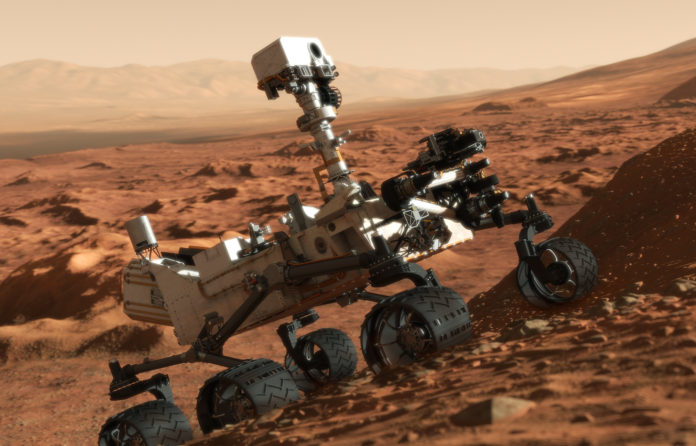Up on Mars, the ChemCam consistently captures the chemical composition of its surroundings as the Curiosity rover roams around. The way it does this is through the use of a specially designed laser system. It may only shine its infrared laser for a few billionths of a second, but boy, does it pack a punch. Using a process called Laser-Induced Breakdown Spectroscopy (LIBS), the ChemCam carefully studies the rocks and soil of the planet’s surface.
Back down here on Earth, a new version of NASA’s ChemCam is being developed by scientists who will include several upgraded features and mean new capabilities for the Mars 2020 rover. As well as having a faster LIBS system, the SuperCam will also feature a new laser system that will be conduction-cooled in which to provide the non-destructive analysis of RAMAN spectroscopy.
The SuperCam is currently undergoing its final stage of testing before getting ready to take to the cosmic skies in 2020. A step up from Curiosity, the new device can switch from a LIBS mode to a Raman mode of lasing. Raman lasing involves two different laser colors exciting and probing molecular vibration energies in order to obtain its chemical identification. This method produces ten times as many shots in each burst than its predecessor which is perfect for faster sampling and is produced by the second laser.
It’s this second laser that will allow the Mars 2020 rover to detect any possible evidence of alien life – past or present. There’s also an upgraded LIBS oscillator that uses a diode to pump Nd: YAG crystal to provide longer bursts than ChemCam and Nd: KGW. The SuperCam uses a multicolor stacked diode to pump a wide spectrum as the Nd: YAG absorbs over such a narrow range of frequencies to lase at a given temperature.
“This laser is running in burst mode, but with the laser, we can do 1000 shots in one burst while the ChemCam laser was 10 timeless,” said one of SuperCam’s developers, Eric Durand. “We longitudinally pump this laser with a stack which is a broadband emitting so that when the temperature is changing, the ND: YAG crystal is still absorbing the light and laser can be used over at least 50 to 60 degrees without temperature regulation.” It’s not too long now before the equipment will be on the Red Planet providing us with invaluable information that we would never have had before.
More News to Read

